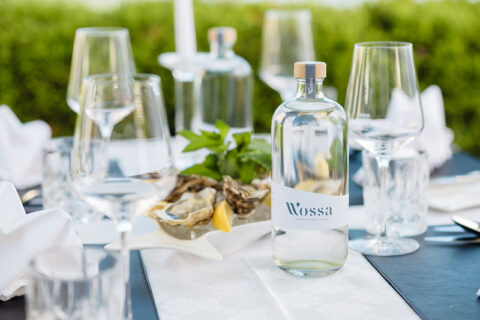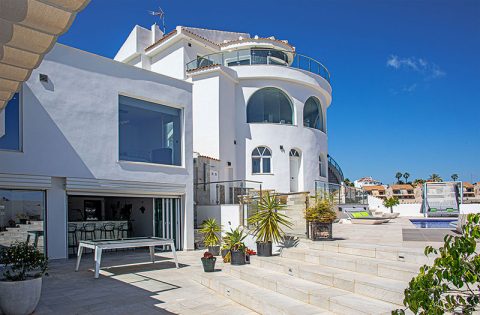Michael, what is a polo pony?
A polo pony was traditionally a small crossbred horse consisting of local Argentine criollo and a small percentage of thoroughbred. The criollo bred horse was used to herd cattle as well as to provide a form of transport to and from work. This was the job of the ‘Gauchos’ back in the days when the exportation of beef was farmers main source of income and the farming of cattle was a bigger industry than crops. Sadly if you see a gaucho these days you will see a mobile phone on his belt where he would have traditionally carried his knife and he’ll probably be in a tractor rather than on a horse. But this is evolution I guess and the result of farmers growing soya amongst other crops instead of farming cattle. These days crops fetch a better price abroad than cattle. Of cause the ban of beef export by the Argentina’s colorful government had a major part to play in this too!
Why the thoroughbreds are a legend?
The appealing features that these Criollo horses had in those days making them desireable on the polo field was the ability they had to stop and turn very quickly and easily earning them the reputation the world knows a polo pony by nowadays as being able to ‘turn on a sixpence’. As well as being very natural this was what they learned from hours and hours of working with cattle. Many successful Argentine breeders of polo ponies today believe that working with cattle was a fundamental part of the training process and contributed enormously towards making them into the finished product.
I too share this belief having ridden, trained and played every type of horse there is and from doing so learned the difference in the way a horse that has worked with cattle turns compared to a horse that hasn’t. The difference is that the horse that has worked with cattle in its early days turns much closer to its own back leg thus turning faster and pointing you in the right direction before competitors. This gives its rider and his team an advantage in the next play whilst playing polo which consists of many ‘plays’, like this, which all happen in very quick succession of each other and include bursts of speed in If your horse can turn quicker and accelerate faster than your competitors whilst maintaining a level head you are at a consistent advantage from play to play because this gives you more time to think, plot and make the correct play, rather than rushing to get to the right place, arriving there late and then rushing the play which will always result in the wrong decision being made and then the either wrong shot being hit or the wrong play made. The horses that do this the best we call in the trade ‘match winners’.
However, this ablity to turn and stop so well came at a price people started to learn as the introduction of thoroughbreds to the game became increasingly popular. As time went on and the game evolved people started to realize that whilst their criollo cross-bred horses had this amazing ability to stop and turn so quickly, they simply weren’t fast enough when they had to sprint in between all these stops and turns. They were now trying to performe these manouveurs against highly trained thoroughbreds which marked the start of huge changes which we have witnessed during the last decade.
There is a very simple explanation why these crillo horses could stop in a way that appeared to be extraordinary and at the end of the stop be instantly prepared and ready to turn either way on command of the faintest hint of a leg aid or the slightest change in balance from their rider. The explanation is that because their top speed isn’t very fast when they were asked to stop it was much easier. So people started to realise that any horse whether it is bigger and potentially faster but travelling at the same speed should be able to stop just as fast as the criollo cross-bred. This then prompted people to start thinking about how this could be used to their advantage on the polo field. During the last decade the speed that polo is played at has increased due to this introduction of thoroughbred horses and every year thoroughbreds are filling larger percentages of peoples playing strings. The term ‘Playing String’ means the horses a player owns and takes with him to his matches. A playing string normally consists of six or seven horses.
As a result there is increasing focus on either breeding your own thoroughbred horses or sourcing them and training them to play polo. I specialize in this lengthily process as well as playing polo professionally. As a young lad working with my own horses and competing around the world I started to notice that a common factor most people who owned horses shared was that regardless of whether or not they had any experience in the matter they were always convinced that they knew more about all the various training processes and discaplines associated to a horse than everybody else. The result is reflected in today’s market where the price one has to pay for a good polo pony has been on a consistent upward trend ever since I can remember.
You are a truly passionate of your work, from where this passion comes?
From experience I can say that there is a funny sort of obsession behind this business with horses. For example unless after reading that you can instantly relate to it perhaps in your own business you can’t understand it. It feels like if you spend enough time on a horse and with them from when they are born each time trying to better the last years crop inevitably it becomes an obsession. I can make my horses do things that I can’t make my dog do! Perhaps another way of explaining it is when a foal is born you already knew what it would look like because you bred its mother and chose carefully who its sire is. Also you can already know what will change in its composition and proportion from male or female apart from the obvious. You can also tell to a ‘T’ what type of character she will be…this can go on and on…as you can see it becomes an abbsesion.
Mike, how is a day in your life?
A typical day in the summer consists of working my playing string with my old friend who has worked with me for ten years and comes over from Argentina every season in March, doing the rounds of all the other horses that consist of broodmares, foals and youngsters. The youngsters are all between three and five years old and in the middle of their training programmes and all at different stages. In the winter I keep some of these youngsters in and continue training them. I also go to all the bloodstock sales to keep an eye out for the odd gem to wonder out looking lost, which they do from time to time.
What drives you?
The real drive behind this comes from the feeling of satisfaction when the time comes for you to hand over the finished product for someone to try to buy. The ups and downs within the everyday training can sometimes be so nerve racking and soul destroying that they send you home in the evening with your tail between your legs wondering what is wrong with the horse that you’ve been working with, asking yourself why it won’t do something I want it to. Then you start to think in depth all the possible reasons why that might be and then onto what you can do or try to make it right to help the horse see what you want it to see. I believe that if the horse isn’t doing what you want it to then you are either asking it too much at once or you are asking it in the wrong way. So you need to reassess what you are asking or how you are asking it.
Please give some recommendations to polo aficionados
I’m considering elaborating these points into a small book that I would like to call ‘Common Sense and Common Errors in Common Riding’. Maybe on day I’ll do that but for now I enjoy breeding, training and playing polo too much. So while I’m young and fit with no time on my hands that’s what I’ll do. I would love to do this with someone else though but don’t know anybody in that industry.
I have a website which is www.thoroughbred-poloponies.com











